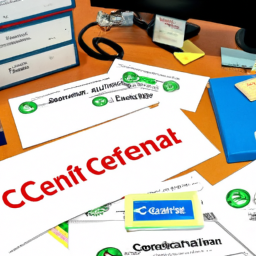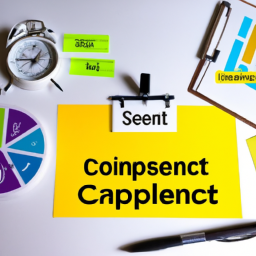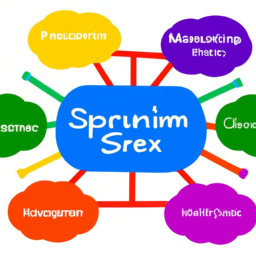Are you ready to conquer the SCRUM exam and become a certified expert? Look no further!
In this article, we’ll decode the secrets to acing the test and give you essential tips for success.
Dive into the world of SCRUM as we explore the framework, roles, and key concepts.
Learn how to effectively communicate within SCRUM teams and discover strategies for implementing SCRUM successfully.
Get ready to take your skills to the next level and achieve SCRUM mastery!
Key Takeaways
- The SCRUM framework consists of three main roles: Product Owner, Scrum Master, and Development Team.
- Agile leadership and agile project management are essential concepts in SCRUM.
- Clear and concise communication is crucial in SCRUM teams.
- Effective sprint planning, flexibility, collaboration, and iterative development are key strategies for successful SCRUM implementation.
Understanding the SCRUM Framework
Now that you understand the SCRUM framework, you’ll be able to apply it effectively to your projects.
The SCRUM framework breakdown consists of three main components: the Product Owner, the Scrum Master, and the Development Team.
The Product Owner is responsible for the product vision, prioritizing the backlog, and ensuring value delivery.
The Scrum Master serves as a facilitator and coach, ensuring that the team follows the SCRUM framework and removes any obstacles they may encounter.
The Development Team is responsible for delivering the product incrementally, collaborating closely with the Product Owner and Scrum Master.
The SCRUM methodology offers several benefits, including increased flexibility, faster problem-solving, and improved collaboration.
Mastering SCRUM Roles and Responsibilities
To excel in understanding the roles and responsibilities in SCRUM, you need to master the different functions each team member plays.
Agile leadership and agile project management are two key concepts that are essential to grasp in order to succeed in SCRUM.
As an agile leader, you will be responsible for guiding and supporting the team throughout the project. You need to ensure that the team is aligned with the project goals and that they have the necessary resources to deliver high-quality work.
On the other hand, as a team member, you have the responsibility to collaborate closely with your colleagues, communicate effectively, and deliver your work on time.
By understanding and fulfilling these different roles and responsibilities, you will contribute to the success of the SCRUM framework.
Now, let’s dive into the key concepts and principles of SCRUM.
Key Concepts and Principles of SCRUM
As a team member, you’ll benefit from understanding the key concepts and principles of SCRUM.
SCRUM is a framework that emphasizes collaboration, flexibility, and iterative development. It is based on three pillars: transparency, inspection, and adaptation.
SCRUM artifacts play a crucial role in ensuring transparency and progress. These artifacts include the product backlog, sprint backlog, and increment.
The product backlog is a prioritized list of requirements or user stories, while the sprint backlog contains the selected items for a specific sprint. The increment represents the sum of all completed product backlog items.
SCRUM events are time-boxed meetings that enable effective collaboration and progress tracking. These events include the sprint planning, daily scrum, sprint review, and sprint retrospective.
Effective Communication in SCRUM Teams
Effective communication plays a crucial role in the success of SCRUM teams. To ensure effective communication, active listening is essential.
Here are five key aspects of effective communication in SCRUM teams:
-
Clear and concise communication: Communicate your ideas and thoughts clearly, using concise and simple language.
-
Active listening: Actively listen to your team members, paying attention to their ideas and concerns.
-
Open and honest communication: Foster an environment where team members feel comfortable expressing their opinions and concerns openly and honestly.
-
Regular team collaboration: Regularly collaborate with your team members to discuss progress, challenges, and solutions.
-
Effective feedback: Provide constructive feedback to your team members, focusing on improvement and growth.
Strategies for Successful SCRUM Implementation
Implementing SCRUM successfully requires a clear understanding of the key strategies involved. As an agile project management approach, SCRUM emphasizes flexibility, collaboration, and iterative development.
One of the crucial strategies for successful implementation is effective sprint planning. Sprint planning involves selecting the right set of tasks from the product backlog and estimating their effort. It is essential to prioritize tasks based on their importance and potential business value.
Additionally, breaking down tasks into smaller, manageable units helps to ensure smoother execution. During sprint planning, it is also important to consider the team’s capacity and allocate work accordingly.
Frequently Asked Questions
What Are the Benefits of Using the SCRUM Framework in Software Development Projects?
The SCRUM framework offers numerous benefits in software development projects. It allows for increased flexibility and adaptability, enabling teams to respond quickly to changes and deliver high-quality products.
The iterative nature of SCRUM promotes collaboration and communication, fostering a sense of ownership and accountability among team members.
This framework also promotes transparency and visibility, ensuring that all stakeholders are informed about project progress.
Overall, using SCRUM in software development projects provides advantages that are crucial for success.
How Does SCRUM Differ From Other Project Management Methodologies?
Scrum is different from other project management methodologies such as Waterfall and Agile.
In Scrum, projects are divided into smaller, manageable tasks called sprints, while Waterfall follows a linear approach.
Scrum allows for greater flexibility and adaptability, as it emphasizes continuous communication and collaboration between team members.
Agile, on the other hand, is a broader framework that encompasses Scrum and other methodologies.
Understanding these differences is crucial for successfully implementing Scrum in software development projects.
What Are the Common Challenges Faced by SCRUM Teams and How Can They Be Overcome?
Overcoming challenges in scrum teams is crucial for success. Common challenges include communication breakdowns, unclear roles, and scope creep.
To tackle these issues, effective solutions can be implemented. Encouraging open and transparent communication, defining clear roles and responsibilities, and closely monitoring project scope are key steps.
Can SCRUM Be Used in Industries Other Than Software Development?
Scrum can definitely be used in industries other than software development. Its principles and framework can be applied to non-IT projects as well, such as marketing campaigns, event planning, or product development.
However, implementing Scrum in non-IT industries may come with its own set of challenges. These challenges could include adapting the Scrum framework to suit the specific needs and requirements of the industry, as well as getting buy-in from stakeholders who may be unfamiliar with Scrum.
Are There Any Recommended Tools or Software for Managing SCRUM Projects?
When it comes to managing Scrum projects, there are several recommended project management tools and Scrum software available. These tools can help you streamline your project management processes, improve collaboration, and track progress effectively.
Some popular options include Jira, Trello, and Asana. These tools provide features like task tracking, team communication, and backlog management to ensure your Scrum projects are organized and successful.
Utilizing these tools can greatly enhance your Scrum project management experience.
Conclusion
Congratulations! You’ve unlocked the secrets of the SCRUM exam. Armed with a deep understanding of the framework, mastery of roles and responsibilities, and a firm grasp on key concepts and principles, you’re ready to soar to new heights.
As you navigate the world of SCRUM, envision yourself as a skilled conductor leading a symphony of effective communication and successful implementation.
Embrace the power of SCRUM and watch your projects thrive and flourish!




















